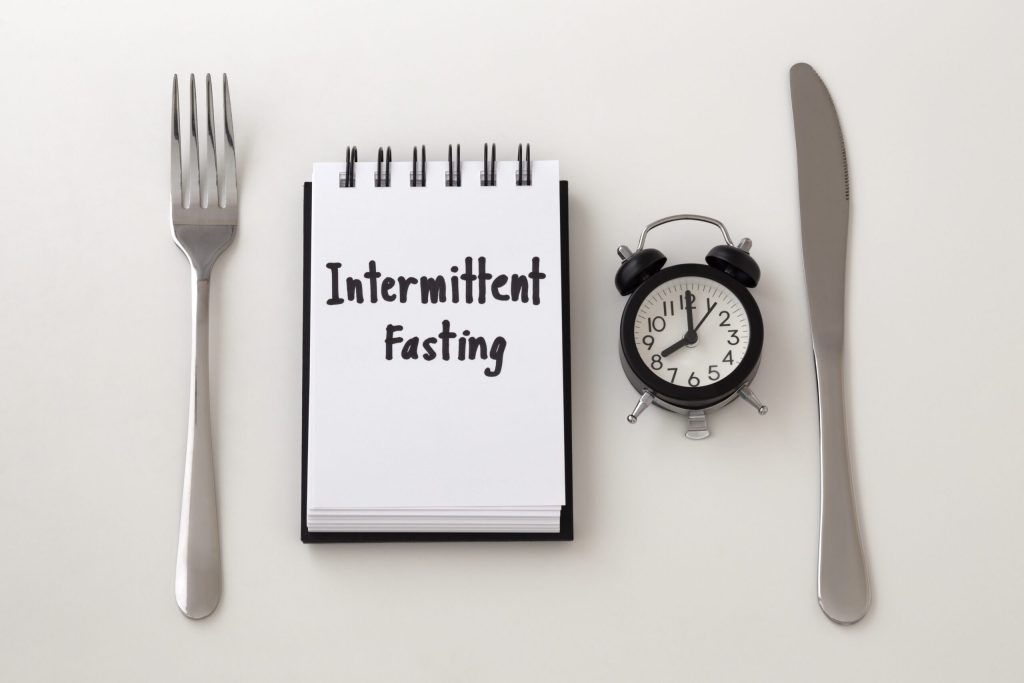Want to know whether vegan intermittent fasting is right for you?
In this article, we’ll break down EVERYTHING you need to know about Vegan Intermittent Fasting, and by the end of it you’ll have all the information and tools needed to start your own protocol (if that’s what you want).
Vegan Intermittent Fasting (VIF) could be a necessary tool to utilize if you struggle with adherence to a traditional diet, but it doesn’t work for everyone, and for some it might even be dangerous.
Let’s go ahead and explore all the nuances associated with vegan fasting.
What is Vegan Intermittent Fasting?
Vegan intermittent fasting (VIF) is a strategy that involves avoiding food intake for extended periods of time. Usually, the consumption period is typically in the evening.
This is not optimal for nutrient timing purposes. However, it can indeed be of value to battle hunger, enjoy some nice meals, and stay in a caloric deficit.
Fasting is an age-old tradition that goes beyond a tool for body composition enhancements.
For generations various cultures and religions have incorporated fasting into their dailly or weekly routine. Buddhism, Christianity, Islam, Judaism, Taoism, Jainism, and Hinduism are known to practice fasting.
With this vast anecdote of people taking advantage of fasting, we can discern that there is some merit to this unorthodox variation of dieting.
There are various VIF methods with the following being the most common:
- Lean gains or 16:8 method: All calories consumed within an 8-hour window and fast for the remaining 16 hours of the day.
- The 5:2 method: Consumption of maintenance calories for 5 days throughout the week.
- The Eat, Stop, Eat method: This is a full 24 hour fast per week.
- The Alternate Day Fasting Method: You eat 500-600 calories every other day, and eat normally (at maintenance) on the other days.
- The Warrior Diet Method: Similar to the lean gains method, here you fast for 20 hours and eat for 4 hours.
Structuring a Vegan Intermittent Fasting Diet
Before establishing which strategy accommodates your lifestyle, it’s important to know how many calories are needed to maintain weight. A great way to do this is to use a formula called the Harris-Benedict; for further details, click here.
After acquiring your “maintenance calories” then it’s best to decide how much of a deficit you want to be in. Losing between 1-2 pounds per week is always the most appropriate rate of weight loss. This would lead you to be in a 500-1000 calorie deficit on average every day.
So let’s say you select the Warrior Diet Method as the VIF you want to take part in.
There are 3500 calories in a pound. If your maintenance calories are around 3000, then to lose two pounds per week, you need to consume 2000 calories during the 4-hour eating window with which you have chosen to consume all foods.
A misconception with VIF is that because you’re fasting, you can eat as much as you want and still lose weight.
Wrong!
There still has to be a calorie restriction which will aid in your fat loss process. Applying this ideology to the above strategies will lead to a successful diet!
Potential Benefits of Vegan Intermittent Fasting
The primary focus of VIF should be to lose fat while restricting calories, and eating a high volume of food in a brief period of time. While this seems counterintuitive, it does indeed work if done correctly. [1]
Not only does it work, but some studies have deemed it a better weight loss intervention tool than other methods. [2] [3]
Photo by Liam Johnson on Unsplash
There are many claims that VIF does things like autophagy, reverse aging, helps maintain muscle mass and raises HGH. However, these need more research and the data is neutral in respect to positive metabolic affects.
Although there may not be a chronic metabolic advantage, there is certainly a lifestyle value to adhering to VIF.
For example, some demographics don’t have a huge appetite but snack consistently throughout the day. These busy folks struggle with calorie restriction but are hardly ever famished and craving food.
Because of this, VIF could accommodate their independent needs better than a traditional diet of eating constantly throughout the day. Adding time boundaries to when consumption is ok will aid in the elimination of constant snacking and bring calories down.
Vegan Intermittent Fasting vs Traditional Diet
As discussed, the primary focus of any diet is to incorporate calorie restriction. Without this paramount staple in weight loss intervention, shedding fat will avoid you forever.
The question really isn’t which one is “better” in respect to metabolism because there is no clear cut answer. There isn’t enough evidence to suggest that one is superior to the other. Rather, VIF will yield a similar calorie restriction than a standard diet.
This systematic review went over 40 publications to analyze if intermittent fasting is superior to regular calorie restriction for weight loss, and found no significant benefits related to fat loss and body composition.
However, one method might work better for YOU which is the key takeaway from this article.
If you have tried traditional dieting for years with mediocre results, there are a few reasons why.
First, there is the struggle to adhere to a calorie deficit. VIF could make this adherence MUCH easier for you if you enjoy eating a large meal and don’t think too much about food for the rest of the day.
Hunger Management
One aspect of VIF that could be a concern is your affinity to get super hungry. A way to curb this is to consume caffeine in reasonable amounts throughout your day.
Caffeine works as a great appetite suppressant. It negates some hunger and signals your body to release when it requires nutrients. If you can manage hunger relatively well, then VIF will be as easy.
Photo by Ben Kolde on Unsplash
In addition to caffeine consumption, high protein intake is one of the best ways to curb cravings.
Of the three macronutrients, protein has the greatest satiety effect and yields the best results.
Between 0.7-1 gram of protein per pound of bodyweight for people who are resistance training and want to improve performance and body composition is best. If you do not resistance train and are relatively sedentary, then 0.4-0.6 grams per pound will suffice.
However, here at the Jacked Vegans Academy we STRONGLY recommend people to lift weights for their happiest, healthiest, and most satisfying life.
4 Proven Steps to Get Started with Vegan Intermittent Fasting
Getting started with your new intermittent fasting diet can be daunting. However, if you follow these simple steps, you’ll be off to a great start and a better chance at success.
1 – Follow your instincts
It’s hard to decide which intermittent fasting protocol is right for you. My best advice would be to follow your instinct.
If you think the 16:8 Method looks like it would fit in with your lifestyle, then give that a go first. Does the Alternate Day Fasting Method sound like it would work for you? Then try that one.
What’s important is you stick with it long enough. If you end up deciding against a certain protocol, then simply switch it up and try something different.
2 – Start off slow
Keep in mind that this is going to be a big change for your body and mind, especially if you have no experience at all with intermittent fasting.
Starting off by going all-in with an 8-hour feeding window could result in you crashing and burning after just a day or two because your body simply wasn’t ready.
I recommend starting yourself off gradually. Start with a 12-hour feeding window, and then reducing it gradually every couple of days until you reach your intended feeding window. You’ll have a much greater chance of succeeding this way!
3 – Set goals for yourself
Photo by Markus Winkler on Unsplash
As I’m sure you already know, diets don’t give results overnight. That’s why you need to give vegan intermittent fasting a chance to work.
Aim to try a new fasting protocol for at least a month. If your body gets used to your new diet, great! Continue with that protocol for as long as you want so that you can really see some positive results.
If you hate your new vegan intermittent fasting routine after 30 days, don’t give up just yet.
Switch to a different protocol.
Slowly make the change like I mentioned earlier, and stick it out for a month so that you can properly determine if it’s working for you.
4 – Plan ahead
Plenty of people get into intermittent fasting because they find it easier than other dieting methods. That doesn’t mean, however, that a little planning can’t help you out. This is especially true at the beginning of a new vegan intermittent fasting diet.
Plan your meals beforehand. Make sure you have all the groceries you need and you can meal-prep/partly prep meals for quick cooking.
This allows you to guarantee that you’re eating healthy meals during your feeding window instead of junk when you’re hungry.
Fasting Tips
Drink a lot
Drinking plenty of zero-calorie beverages.
Drinks like black coffee, tea, water, sparkling water, keep you full enough to last until you break your fast.
Coffee and tea especially help to curb your appetite due to their caffeine content.
Be flexible
You can move your fasting schedule up and down to suit your needs.
If you’re going to a party or dinner at around 8pm, plan your fasting schedule so you can fit your feeding window in. You can fast from 1 pm to 9 pm if you’re doing the 16:8 method so you can eat with everybody.
Be kind to yourself
When you’re trying to build a new habit, there will be times when you’ll slip up.
Don’t beat yourself up if you only fasted for 12 or 14 hours instead of 16. Keep in mind that this is part of the process to build a new you. Stick to your plan and see it till the end.
Common questions when starting vegan intermittent fasting
You’ve probably got a bunch of questions that you want answers to before you start your vegan intermittent fasting journey. Here are some of the most common questions my clients ask me, and my go-to responses that I hope you find helpful.
Do I need to take supplements when intermittent fasting?
I recommend taking supplements on any vegan diet. The only difference with vitamins and supplements for intermittent fasting is to make sure you take them within your feeding window. That’s because taking them without food can often cause an upset stomach.
The supplements I recommend are iron, zinc, vitamin D, calcium, and vitamin B-12 as they’re extremely important nutrients and are often lacking in vegan diets.
Also, keep in mind that some fat-soluble vitamins may work better when taken with meals.
Remember, taking vitamins isn’t an excuse for eating loads of low-quality unhealthy foods during your feeding window. Take them alongside a healthy, balanced diet for optimal results.
What can I drink between feeding windows?
People often overlook the amount of calories in drinks. A fancy Starbucks coffee with all the toppings can contain over 500 calories, so you definitely shouldn’t be drinking that. Avoid sugary soft drinks too, as they’re deceptively high in calories.
Photo by Nigel Msipa on Unsplash
But don’t stop drinking all together. It’s really important that you stay hydrated when fasting, and it’ll help your body keep feelings of hunger at bay for longer. I’d suggest mainly sticking to water, tea, black coffee, or other zero calorie drinks.
How long can I do intermittent fasting for?
Set a goal weight, and attack VIF until this weight is reached! I typically do not recommend dieting for longer than 15 weeks at a time as your metabolism loses efficiency after long periods of a calorie deficit.
So it could be good to diet for 15 weeks, take a 7 week diet break where you don’t gain or lose weight, just maintain. Then diet again for 15 weeks and repeat the process until your goal weight is achieved!
This might take years, or just a few months depending on how much weight you are aiming to lose. Either way, be sure to stay strict with your calories and you will get there soon enough!
What time should I start fasting?
The good thing about intermittent fasting is that it fits around your lifestyle and daily activities, so this really comes down to personal preference, and it also depends on the fasting protocol that you’re following.
Remember that your diet shouldn’t dominate or disrupt your life. Aim to time your feeding window so that you can eat with family or colleagues at some point in the day.
Intermittent fasting doesn’t mean you have to eat alone at weird times of the day!
Most people are pretty hungry when they wake up in the morning, so 8am-4pm is a great feeding window for those on a 16:8 fasting protocol. Give that a try, and adjust as you feel necessary!
How do I know if intermittent fasting will work for me?
There’s only one way to figure these things out, and that’s by trying them.
Trial and error is the best way to know if a particular IF protocol is for you. And remember what I said earlier:
Try a protocol out for at least a month to see how your mind and body get used to it, and then evaluate whether it’s helping you reach your goals.
Who should try intermittent fasting?
People who skip breakfast do intermittent fasting without even knowing it. If you skip breakfast anyway then the 16:8 method might be for you.
Also, If you’re the type who would rather eat two or three big meals rather than six small meals a day, and if you think it’s a sustainable way to eat, then you’re welcome to give it a try.
Who shouldn’t try intermittent fasting?
It’s probably a bad idea for children to fast because they need to eat more in order to support their growing bodies.
Women who are trying to conceive, are pregnant or breastfeeding, or who have a history of amenorrhea (absence of menstruation), are advised to skip fasting as well.
And lastly, those with medical conditions such as those who are underweight, have an eating disorder, or with low blood pressure might do better with a more traditional diet.
Are there any side effects of intermittent fasting?
Hunger, weakness, and possibly difficulty in concentrating.
These are normal, especially in the beginning, so don’t be afraid of it. They will disappear once you get used to the eating plan. But if you start seeing signs of hypoglycemia like shaking, sweating, and confusion, then you should stop fasting and eat normally.
Is it safe to try intermittent fasting if I have diabetes?
The best way to proceed is to ask your doctor first.
Individuals who suffer from Type 1 Diabetes need insulin to control their blood sugar levels. Fasting may cause their blood sugar to go dangerously low (hypoglycemia).
When they break their fast, they risk developing too high blood sugar levels (hyperglycemia), especially if they overeat and consume too many carbs. This could cause a spike in blood sugar levels.
If your doctor says it’s ok to try, then proceed, but ask if you need to check your blood sugar more often to avoid hypoglycemia or if you need to adjust the dosage of the medication you’re taking.
Can you consume less than 50 calories without breaking the fast?
Adding a bit of sugar, milk, or stevia to your black coffee might not be significant enough to break the fast, however you should be wary of the effects it has on your appetite.
When you’re fasting and feeling a bit hungry, your brain will send signals to your body to get something to eat, and anything that tastes like food (stevia, sugar, and milk) intensifies and tastes much better to get you to eat more of it, possibly causing you to break your fast sooner.
Will vegan intermittent fasting work if you only do it on some days?
Consistency is the key if you’re trying to lose weight, whether it’s exercise, diet, or an eating plan like intermittent fasting.
The amount of effort you put in will determine your results.
How many meals should I eat when I’m on intermittent fasting?
It depends on how much you can eat during your eating window.
KatonaBea from Pixabay
If you eat healthy and nutrient-dense foods, it might take about three hours before you feel hungry again because they’re very filling. You probably won’t be able to fit six meals in your feeding window but three meals sound about right.
Is a 12 or 14-hour fast just as effective as a 16-hour fast?
Our bodies usually take up to 12 hours after our last meal to use up the glycogen stores. After that, it switches to burning fat as fuel.
You’ll burn fat anyway whether you’re on a 12-hour or 16-hour fast but be careful not to overcompensate during your feeding window and eat all you can, as that is counterintuitive and not supportive of your weight loss goals.
Remember, you’ll only lose weight if you’re consuming less calories than you’re burning, and intermittent fasting should help you with the first one.
The Bottom Line on Vegan Intermittent Fasting
As you’ve probably realized after reading this post, intermittent fasting can be a great option for vegans who want a flexible diet that fits around their lifestyle, and that gives them amazing results too.
If you decide to give IF a go, just remember to eat healthy, drink plenty of water, and start off slow if this is your first experience with fasting.
This article should be a good starting point for any vegans interested in intermittent fasting, but if you need some extra help to reach your fitness and nutrition goals, you’re in the right place.
————————————————————————————————
We’ve helped thousands of vegans shred fat, build muscle, and get the body they’ve always wanted.
How? With tailor made meal plans, personalized workout routines, and regular 1 on 1 coaching calls.
If that sounds like something you could benefit from to finally get in shape and become a healthier person, apply to become a Jacked Vegan, just click on that link and book your FREE consultation.




